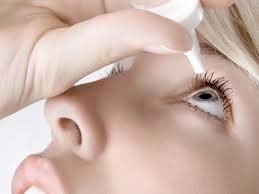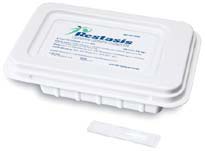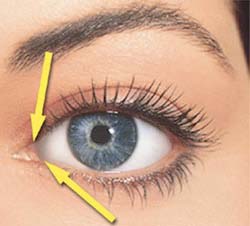Dry Eye Syndrome
Dry Eye Syndrome is a very common disorder of the tear film with the most common symptom being excessive watering.
There are two types of tears that the eye produces:
- Lubricating tears: these tears are produced slowly over the course of the day and contain a precise balance of nutrients, water and oils that protect the surface of your eye from the harsh environment.
- Reflex tears: these tears are your body’s reaction when it becomes irritated or injured. When you get something in your eye or you walk through smoke on a fall day, for example. Reflex tears pour out of the eye so fast that the built in drainage system cannot handle, therefore they run out and down your cheek. Another cause of reflex tears is irritation of the eye from a lack of lubricating tears.
If your eye fails to produce sufficient amounts of lubricating tears, you have excessive tear evaporation or an abnormal production of mucus in the tear layer, you will be diagnosed with dry eye.
Symptoms
- Watery eyes
- The feeling that there’s sand in your eyes
- Eyes that itch and burn
- Vision that becomes blurred after periods of reading, watching TV, or using a computer
- Red, irritated eyes that produce a mucus discharge
Causes
- Age: As we get older, glands in the eyelid produce less oil which helps keep tears from evaporating off the eye, thus leaving the eye dry.
- Diseases including diabetes, Sjogren’s and Parkinson’s
- Hormonal changes, especially after menopause
- Some medications, such as antihistamines, sleep aides, antidepressants, beta-blockers & oral contraceptives.
- Hot, dry, or windy conditions: High altitude, air-conditioning and smoke can also cause dry eye.
- Reading, using a computer or watching TV
- Contact lenses
- Some types of eye surgery, including LASIK can aggravate dry eye.
Diagnosing
Your doctor will check for dry eye by examining your eyes with magnifying instruments, measuring your rate of tear production and checking the amount of time it takes for tears to evaporate between blinks. They can also check for pinpoint scratches on the front surface of the eye caused by dryness using special, colored eyedrops call fluorescein or Rose Bengal.
Treatments

Artificial Tears
Artificial tears are the most common treatment to provide moisture and lubrication for the eye. Artificial tears come in liquid form, gel form or as a long-lasting ointment. There are many brands of artificial tears and most are available over-the-counter. The drops are typically used 4 times a day or more often as needed.
Restasis

Punctal Occulusion

